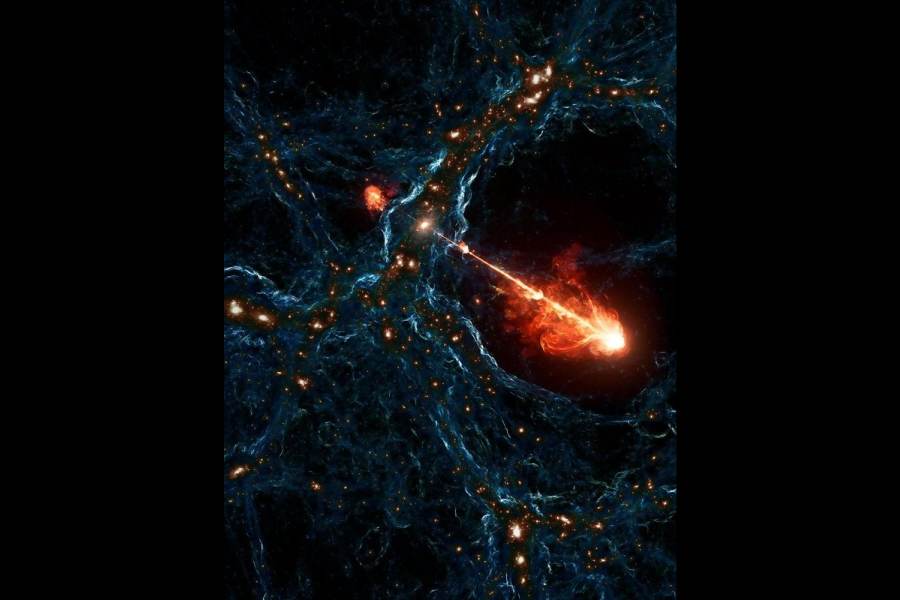A radio telescope in India has helped astronomers pinpoint the source of an unusual signal that they have identified as the longest-ever “jet” spewed by material falling into a supermassive black hole in a distant galaxy.
The Giant Metrewave Radio Telescope (GMRT), an array of 30 dish antennas 90km north of Pune, was among a triad of telescopes used by astronomers in Europe and the US to discover the gargantuan jet 23 million light-years long end-to-end.
Astronomers have over the decades catalogued over 50,000 so-called plasma jets — streams of high-speed electrons and protons — ejected by material as it is sucked into supermassive black holes located at the centres of galaxies.
Supermassive black holes exist at the centres of all galaxies but not all are active — swallowing material — all the time. The jets emerge under the combined influence of the black hole's gravitational pull and magnetic field.
“The longest jets known until now stretch between five and ten million light years,” said Yogesh Wadadekar, a scientist at the National Centre for Radio Astronomy, Pune, who was not associated with the discovery but has studied such jets in the past.
"The new jet is 23 million light-years long, equivalent to 140 Milky Way galaxies side-by-side — this is something that our current models of supermassive black holes and the jet formation mechanisms will find difficult to explain,” Wadadekar told The Telegraph.
The giant jet — named Porphyrion, after a giant in Greek mythology — is among nearly 11,000 radio signals of large structures the European-US astronomers detected using the Low-Frequency Array (Lofar) radio telescope in the Netherlands over the past five years.
Although Lofar detected the structures, astronomers needed a much more powerful radio telescope to pinpoint the source of the structures. The GMRT has a high resolution, high sensitivity and operates at low radio frequency, making it an ideal instrument for the task, Wadadekar said.
Once the GMRT pinpointed the source, the astronomers used the Keck I, an optical telescope located in Hawaii, to compute the distance.
“We may be looking at the tip of an iceberg,” said Martijn Oei, a scientist at the California Institute of Technology in the US and lead author of the paper, describing the discovery published on September 18 in the journal Nature. "Our Lofar survey covered only 15 per cent of the sky. We believe there are many more of these behemoths."
Astronomers knew before the start of the Lofar survey that such large jets exist. “But we had no idea there would turn out to be so many,” said Martin Hardcastle, professor of astrophysics at the University of Hertfordshire in the UK and a co-author of the paper.











